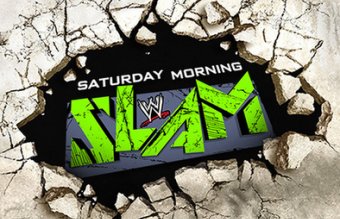In-fighting between fans over the 'PG' status of WWE television has been the dominant subject for nearly five years, and that debate appears to have no end in sight.
Evaluating the overall quality of the wrestling—and whether the product would be notably improved if aimed at a different demographic—is something of a futile endeavor, as there are too many potential pros and cons that effect either side's argument.
Nothing is ever gained, and more bad feeling is spread among the two sides.
The basic reasoning behind the WWE's business decision to produce PG material is that it encompasses the family market, who can be sold more merchandise than other consumer groups, and these family groups guarantee high attendance in smaller towns.
Attention from children also pushes up advertising revenue, and that helps the bottom line at the end of the year. Social media activity and Monday Night Raw's additional third hour have already shown signs of improving the company's finances further, as long as WWE maintains a high enough weekly rating.
In fact, the success of the WWE since changing at Raw 1,000 has gotten the attention of the business world, as Bloomberg Businessweek reported that the ROTH capital markets improved WWE stock status "from neutral to buy." The article also indicates the non-WrestleMania pay-per-view sales were up for the first time in four years.
The combined effects have improved WWE shares back to their average three-year levels, after a record slump in August.
Yet it is becoming increasingly clear that the WWE is now losing out on the 18-35 market, and the knock-on effects of losing the more income-accessible individuals could be concerning in such tough economic times.
 WWE already catering for younger fans Overall family budgets are being squeezed from all sides by fuel and food costs while easy credit is much harder to find. This means that trips to the wrestling arena will be dropped in favor of cheaper pursuits, which is when the WWE needs the less financially inhibited fans to step in.
WWE already catering for younger fans Overall family budgets are being squeezed from all sides by fuel and food costs while easy credit is much harder to find. This means that trips to the wrestling arena will be dropped in favor of cheaper pursuits, which is when the WWE needs the less financially inhibited fans to step in. This group of 18-35 has fallen from 50 percent in 2005 to now 41 percent, with the overall viewership contracting over that time period. Effectively this means that the group that WWE rely on to maintain their support against financial restrictions has fallen by nearly 12 percent.
The slump in share prices over the longer term would suggest that this lost safety net is more important than the increased sales of the more fickle family market.
Therefore, the split in opinion over how WWE television is presented is matched by the finances behind the scenes.
Uniting these two elements into a combined entity appears to be out of the question, as the excitement and complexity demanded by an adult audience alienates the family while the child-appeasing portions are undermined by older fans.
Outside influences such as Linda McMahon's senate campaign and the BA Star campaign also hinder any chances of combining adult and children entertainment.
This leads to the logical conclusion that the WWE needs to split its programming officially. Two separate groups could then be created with clearly demarcated audiences, with each having storylines and characters relevant to the viewers which could be relied on to not cross over with the other "universe."
Such a move would be revolutionary to the WWE and, initially, it would be cost prohibitive. There would be some alienation of fans as well, as their favorite stars may end up on the other side of the divide, but these are acceptable costs for the long-term security and potential benefits.
 The immediate advantage is the WWE could keep both markets and even tailor more specifically to the needs of those watching. Certainly the BA Star program could be better integrated into a family show, with bullying behavior punished accordingly.
The immediate advantage is the WWE could keep both markets and even tailor more specifically to the needs of those watching. Certainly the BA Star program could be better integrated into a family show, with bullying behavior punished accordingly. The WWE keeps Raw and SmackDown spiritually apart to double house shows, so this would not cost extra and attendances would hopefully improve as more people embrace their version of the product.
Progression between the two universes ought to be a natural development for younger fans as they age, which could allow the WWE to better maintain youth interest. The continuation of interest should rebuild the key 18-35 demographic and guard against the expansion of MMA.
Additional bonuses could also come around from such a move. Raw talent that is commercially viable could be trained up on the family show, as mistakes made there would be forgiven far more easily than they would be now.
Wrestlers whose gimmicks have flopped could be given a whole new lease of life by making the step into the other "universe." The same move could be used for those who have found their gimmicks going stale or underutilized.
Obviously some fans will still watch both versions of the product, and the viewers will need to be accepting in the idea that wrestlers can be reborn as someone new when they cross the divide, but both of these elements co-existed in the past when WWE and WCW were at war.
It would be a huge move that a currently cautious WWE is unlikely to pull, but it doesn't stop it from being the most logical—and potentially the best—move for the WWE's long-term future.
No hay comentarios:
Publicar un comentario